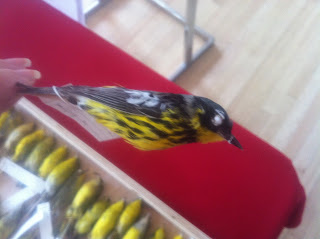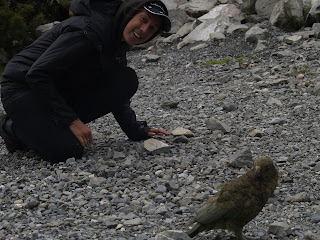- this experience took place at the Royal Ontario Museum over the March break. It was part of the larger “March Madness” event, in which our exhibit was located in the “Natural World” section.
- as part of the learning experience, there were a variety of activities involved:
- Introduction: when the visitors first visited the booth, they first encountered about 100 specimens of birds. Most visitors have very little knowledge about the biodiversity of birds that exist within Ontario, so this provided an opportunity to introduce different types of birds like warblers, sparrows and finches.
- Birds of Prey: the group of birds the general public seems to be most familiar with are the birds of prey. To celebrate this knowledge, we had skeleton comparisons of owls with their stuffed mounts. Most children were astonished by the small size of the owl compared to its skeleton. Wing comparisons between owls (Great Gray, Great Horned, Long-eared and Short-eared) were also presented with hawk wings. Visitors were able to contrast and compare the different traits that have evolved, such as feather softness and wing shape.
- Bird Banding: visitors were able to learn about what bird banding is and how it contributes to scientific knowledge. Techniques about how the bands are put on the birds and what they mean were introduced, and then different birds strategically placed within the auditorium were spotted using a scope and the bands were read. Visitors were then given the option of being banded themselves, where bracelets were placed on their wrists and they could use an online app to determine what bird they were. This then gave information about the bird’s biology, threats to their existence, and what is being done to conserve them and how they could help.
- Bird Dissection: at the end of the exhibit, and with ample warning that some may find it not suitable, there was a live demonstration of a bird skinning. Birds that had died from window collisions were used, and the problems associated with this were explained. A full dissection was preformed, included taking about the inner organs (which is usually not done). Visitors learnt about the different way of breathing birds have, compared the extraordinarily large eye size to the brain size, and got to see how gravel was used to digest the bird’s last meal. Overall, this was the most well received part of the exhibit.
No matter how "gross" it was for the kids at first, by the end they left filled with fascination and knowledge!



























